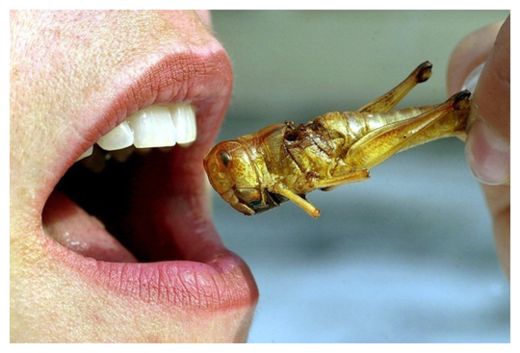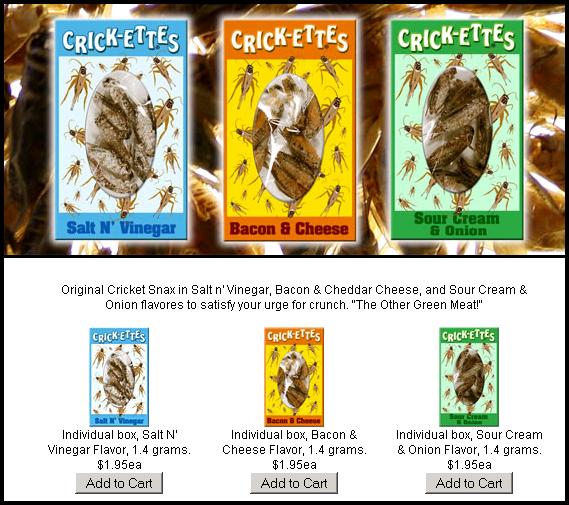When the collective conversation turns to how we will feed the planet in the years to come, the subject of entomophagy invariably comes up.
In this week's New Yorker, Dana Goodyear delves deep into the past, present, and future of bug eating, which are "now appearing on the menus of high-end restaurants in North America and in grocery stores in the Netherlands" as "a growing number of scientists, entrepreneurs, and chefs are arguing that they represent a sustainable, humane source of protein that we'd be foolish to overlook."
"Food preferences are highly local, often irrational, and defining: a Frenchman is a frog because he considers their legs food and the person who calls him one does not," she writes. "In Santa Maria Atzompa, a community in Oaxaca where grasshoppers toasted with garlic, chile, and lime are a favorite treat, locals have traditionally found shrimp repulsive."
"They would say, 'some people' eat it, meaning 'the coastal people,'" anthropologist Ramona Perez tells Goodyear, before pointing out that "when she made a scampi for a family there, they were appalled."
Daniel Fromson also weighs in with a look at insects-as-food, in the latest issue of The Atlantic, noting that "with worldwide demand for meat expected to nearly double by 2050, farm-raised crickets, locusts, and mealworms could provide comparable nutrition while using fewer natural resources than poultry or livestock."
Explains Fromson:
Crickets, for example, convert feed to body mass about twice as efficiently as pigs and five times as efficiently as cattle. Insects require less land and water -- and measured per kilogram of edible mass, mealworms generate 10 to 100 times less greenhouse gas than pigs.According to Goodyear, "children are often seen as the great hope of entomophagy, because of their openness to new foods, but even they are not without prejudices," after which she describes a stinkbug-and-kale salad which kids didn't particularly enjoy -- because they don't generally like kale.
While it's not likely you'll be ordering a McMillipede Happy Meal anytime soon, some entrepreneurial souls are hoping bugs will be the next sushi -- which faced tremendous resistance when it was introduced to the US by Noritoshi Kanai in the 1960s.
However, one would have to eat 1,000 grasshoppers to take in the same amount of protein as in a twelve-ounce steak. Which is one reason Tom Turpin, a professor of entomology at Perdue University, tells her, "If there were insects out there the size of pigs, I guarantee you we'd be eating them."





Just what I want to eat bugs and bug guts and bug shit that sounds so appetizing.Yea hello I would like to order a bug shit sandwich with cheese and some of that special sauce.
When that happens I guess I will starve.I refuse to eat bug guts and bug shit.